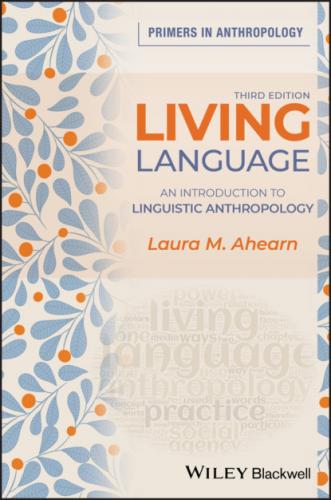Notice that contemporary standard English pronouns no longer have different forms for single and plural “you” (though many Southern US dialects do use “y’all” for the plural form), and there is no longer any way of marking status through formal honorific forms, as there used to be when there was a choice between “ye/you” (formal) and “thou/thee” (informal). Further changes in English pronoun usage have also taken place in recent years; “they” is increasingly being used not only for an individual whose gender is unknown but also for nonbinary individuals.9 Pronouns in many European languages provide status contrasts that are not present in English, as is evident, for example, in Spanish with “Usted” (“you” formal) and “tu” (“you” informal), in French with “vous” (“you” formal) and “tu” (“you” informal), and in German with “Sie” (“you” formal) and “du” (“you” informal). The dialect of Nepali spoken in the village of Junigau has three (and in some variants, four) status levels in both second- and third-person pronouns, as can be seen in Table 1.2.
Table 1.2 Nepali pronouns in the Junigau dialect
| Singular | Plural | |
|---|---|---|
| 1st Person | ma | ha¯mi(haru) |
| 2nd Person | high honorific: tapa¯ı¯ | high honorific: tapa¯iharu |
| middle level: timı¯ | middle level: timiharu | |
| lowest level: tã | lowest level: timiharu | |
| 3rd Person | high honorific: waha¯~ | high honorific: waha¯~haru |
| middle level: u | middle level: uniharu | |
| lowest level: tyo | lowest level: tiniharu |
In Junigau, people whom you address and people to whom you refer are obligatorily divided into those of higher status than you, those of roughly equal status, and those (like children, animals, and wives) who are of lower status. In the dialect of Nepali spoken in Junigau, there is no gender differentiation in pronoun use. In Nepali as in English, however, there is only one form for the first-person singular and plural pronouns (“I” and “we” in English). In contrast, some languages, such as Tamil, Quechua, and Vietnamese, distinguish between two different forms of “we,” depending on whether the addressee is included (as in “you and I, and perhaps others”) or excluded (as in “s/he and I, but not you”). Other languages, such as Sanskrit, have different plural forms for just two people (called “dual”) and for more than two people (called “plural”). Hebrew has two different pronouns for “you” – one for female audiences and one for male or mixed-gender audiences (cf. Sa’ar 2007). Comanche, a Native American language, distinguishes between visible/not visible and near/far when referring to an object with a third-person pronoun. This means that there are four different forms of “it” in Comanche (Cipollone et al. 1998:150–151). All of these forms constitute obligatory grammatical categories in these languages; one cannot opt out of them. It is absolutely necessary, for example, to designate the relative social status of an addressee when speaking Nepali, and to indicate whether an object is visible or not when speaking Comanche. Pronouns across the world’s languages therefore require speakers to take note of very different aspects of the physical and social world around them.
Noun classes are also extremely variable across different languages. Most readers will probably be familiar with gender classifications among nouns in European languages, such as masculine and feminine nouns in Spanish or French, and masculine, feminine, or neuter nouns in German. Less familiar to many English speakers, but nevertheless found in many of the world’s languages, are categorizations of nouns that are more numerous, such as the four noun classes of Dyirbal, an endangered indigenous language of Australia, in which it is obligatory to choose the correct classifier from among the following before each noun (Lakoff 1987:93; Dixon 1982):
1 Bayi: (human) males; animals
2 Balan: (human) females; water; fire; fighting
3 Balam: nonflesh food
4 Bala: everything not in the other classes.
Bantu languages, which are spoken by hundreds of millions of people in Africa, have up to 22 different noun classes. Again, speakers are obliged to use the correct classifier as a prefix before each noun that they use. Consider the many noun classes in Swahili, spoken by millions of people, as represented in Table 1.3.
Table 1.3 Noun classes in Swahili
| Class number | Prefix(es) | Typical meaning (though there are many exceptions) |
|---|---|---|
| 1 | m-, mw-, mu- | singular: persons |
| 2 | wa-, w- | plural: persons (a plural counterpart of class 1) |
| 3 | m-, mw-, mu- | singular: plants |
| 4 | mi-, my- | plural: plants (a plural counterpart of class 3) |
| 5 | ji-, j-, Ø- | singular: fruits |
| 6 | ma-, m- | plural: fruits (a plural counterpart of class 5, 9, 11, seldom 1) |
| 7 | ki-, ch- | singular: things |
| 8 | vi-, vy- | plural: things (a plural counterpart of class 7) |
| 9 | n-, ny-, m-, Ø- | singular: animals, things |
| 10 | n-, ny-, m-, Ø- | plural: animals, things (a plural counterpart of class 9 and 11) |
| 11 | u-, w-, uw- | singular: no clear semantics |
| 15 |
|
